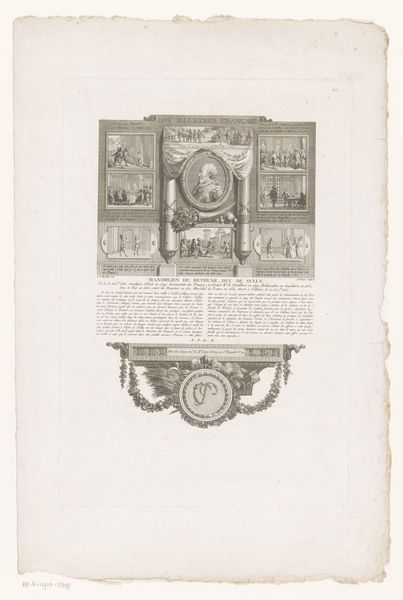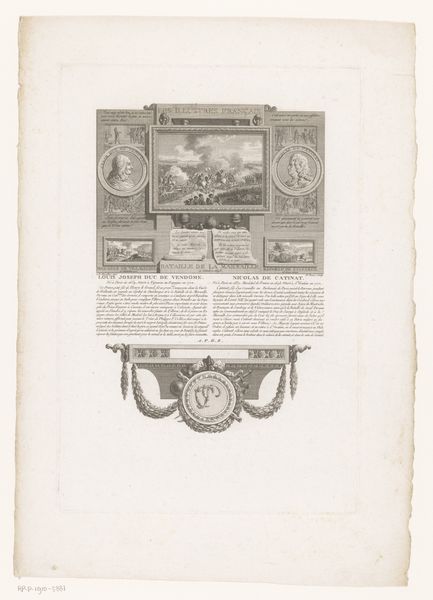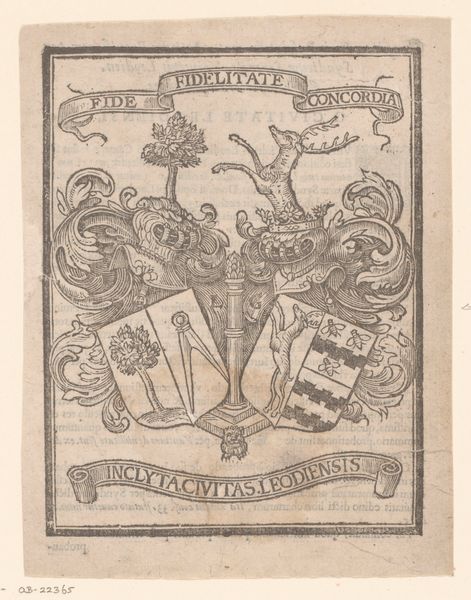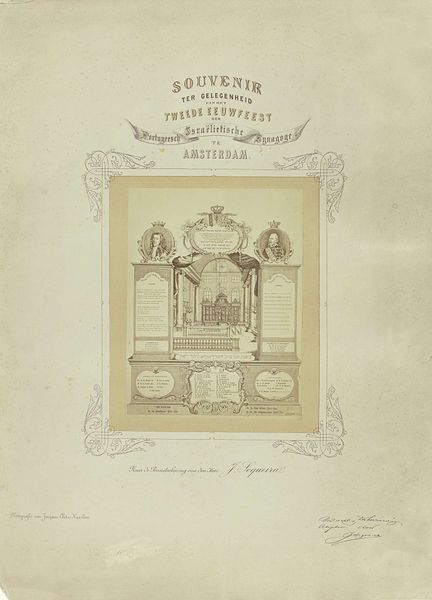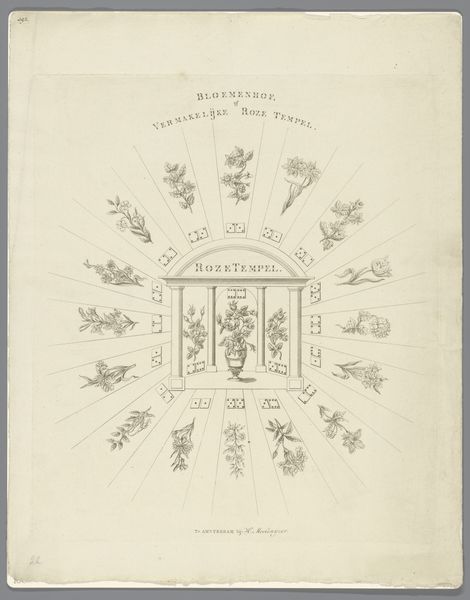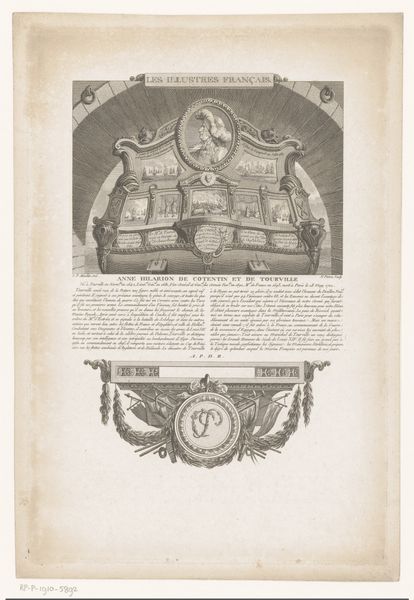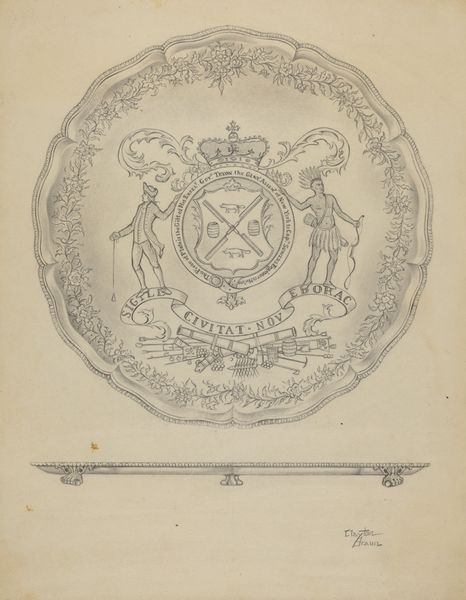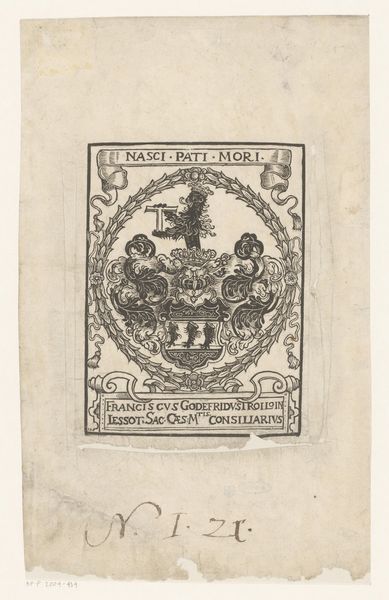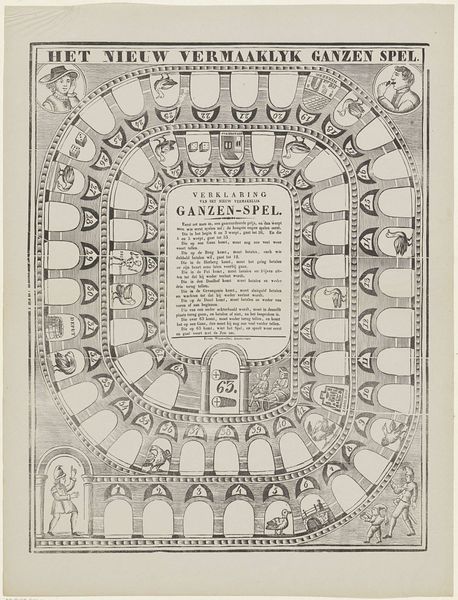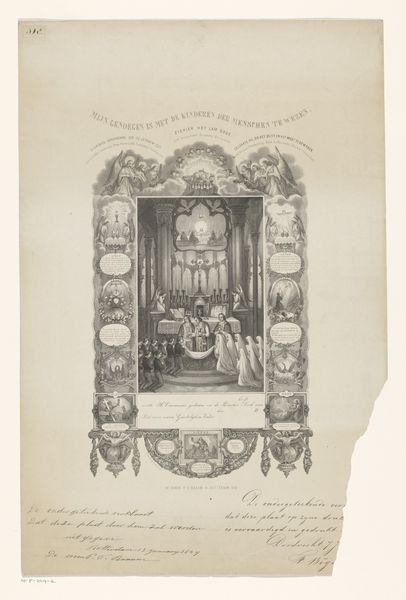
Dimensions: height 402 mm, width 298 mm
Copyright: Rijks Museum: Open Domain
Editor: This engraving, "Symbolen van de Vrijmetselaars" from 1813, really grabs my attention. All those geometric symbols – it feels very structured, almost like an architectural blueprint, but also kind of mystical. How would you interpret it? Curator: I look at the production of this print. Engravings are labor-intensive, each line carefully etched, reflecting a system of knowledge being painstakingly disseminated. Think about who owned these prints, where they were displayed. This isn't mass-produced, disposable imagery; it’s a crafted object carrying very specific cultural and political weight. Editor: Political weight? How so? Curator: Freemasonry was often viewed with suspicion by established powers. So the very act of creating and owning this print could be seen as a statement. And consider the materials: paper, ink, metal – where did these come from? Who controlled those resources? Editor: I hadn't really considered the material and the social status tied to that access. It shifts my perspective a bit. So, you are saying this print wasn't just about conveying masonic ideas; it was about participation in a certain cultural sphere, showing material connections. Curator: Exactly. The content is inherently tied to how it's materialized, from the skills of the engraver to the networks that distributed the final print. Even the symbolism becomes another component in understanding materiality, production, and social status in culture. Editor: So by analyzing its materials and modes of production, you’re revealing social networks of the time. That makes me think about value - intrinsic and extrinsic. Thank you for making this tangible.
Comments
No comments
Be the first to comment and join the conversation on the ultimate creative platform.
